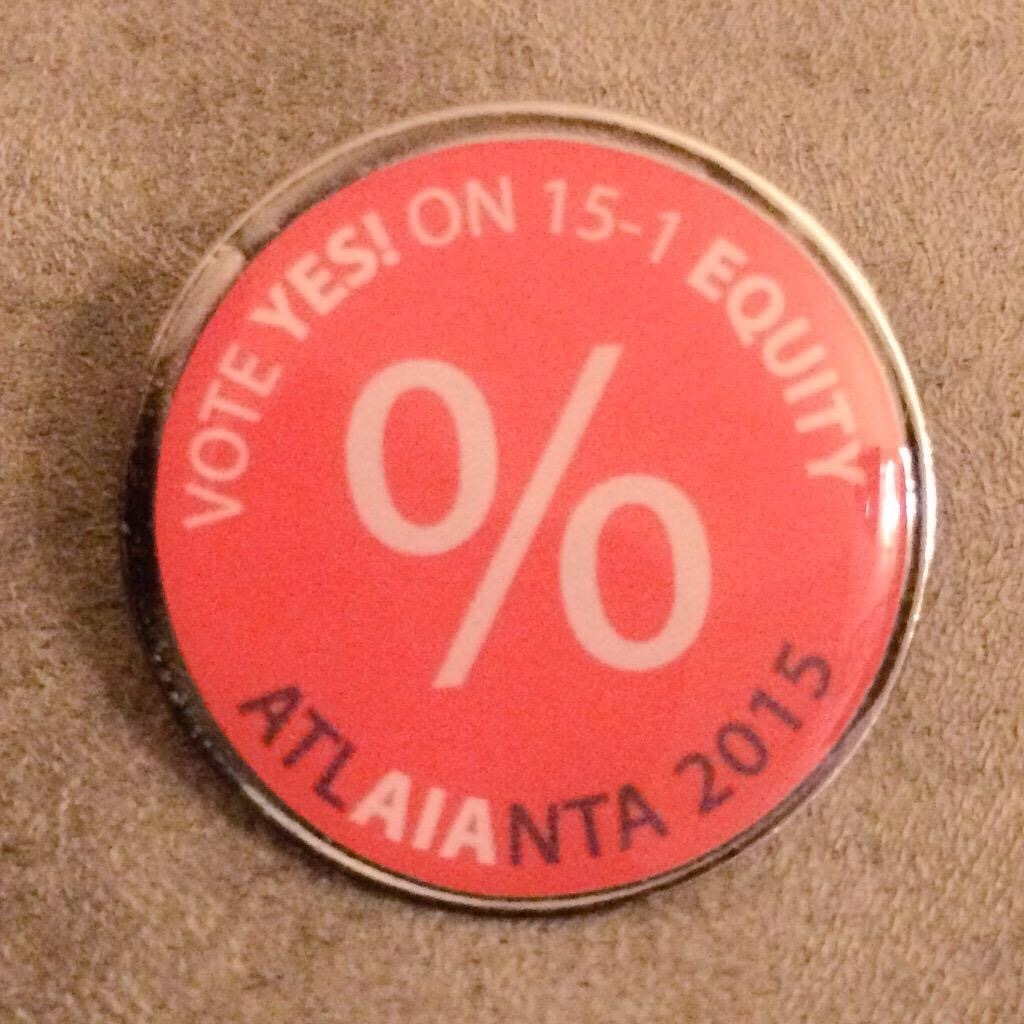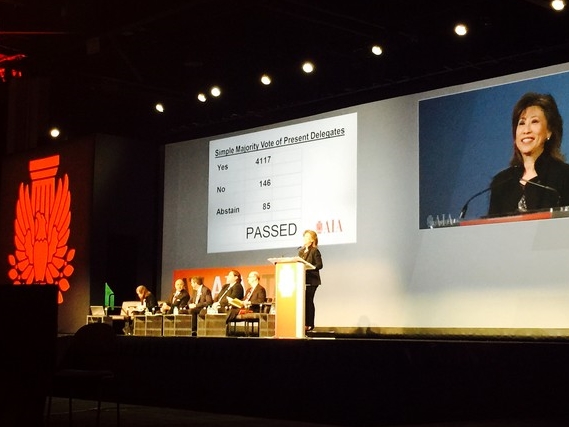Origins
Join AIA San Francisco as we convene to transform challenging issues by research and equitable practice within the architectural profession and explore changes necessary to keep future generations of practitioners engaged in the field.
#EQxD2020 - Practice, Process, Paradigm
“We grapple with the paradox that tomorrow is not promised, but we make plans anyway.” — Lin Manuel Miranda
These are extraordinary times. The conditions in which we find ourselves today, while unsettling to many of us, have the potential to severely harm those in our society who are most vulnerable, and often, invisible. In this moment of crisis, we have an opportunity to rise to the occasion and become better leaders, champions and advocates to overcome not only the urgent situation of the current COVID-19 pandemic, but also to learn from this monumental challenge and design a more just, equitable, diverse, and inclusive future for everyone.
#EQxD2020 marks the beginning of a new decade to tackle current and urgent challenges with renewed perspective and a long horizon to advance a better future. We are expanding the agenda of Equity by Design to address the complex conditions and issues we face that will impact our collective well-being: climate uncertainty that affects access to environmental and spatial resources; compounding gaps in social and economic inequality that amplify health and wellness risks that can negatively impact our communities, especially for those among us who are most at risk and under-served. Architecture is a political, social, and economic act. At the intersection of all these drivers is our commitment to champion these issues in the built environment, which are critical to improving the human condition and quality of life for everyone.
Equity by Design was founded to address and minimize barriers in order to maximize our collective potential for success. We have made great strides to collect and disseminate data, while also creating platforms to advance equity, diversity, and inclusion in professions that shape the built environment. In the spirit of expanding our advocacy to sustain the next generation, we must rapidly and effectively shift our thinking. The world is a vital ecosystem that requires us to adopt an intersectional approach to advance the change that is imperative for our success in the future.
Why Equity Matters for Everyone
“Equity” and “equality” have long been used interchangeably, but the terms are often confused with each other. While the focus of equality is framed with sameness being the end goal, equity may be defined as a state in which all people, regardless of their socioeconomic, racial, or ethnic grouping, have fair and just access to the resources and opportunities necessary to thrive. Beyond equity’s newer association with pluralism, it has long been connected to financial capital, as well as to collective ownership, vested interest, and a sense of value or self-worth.
Equity has a strong potential as a new paradigm and social construct to succeed on multiple levels—equity in education, equitable practice in the workplace, and social equity in access to basic life resources, healthy and safe communities, and public space in our urban centers. The equity-focused value proposition at all these levels is rooted in transparency, education, collaboration, and trust.
The lack of equity in architectural practice and allied professions has made them prone to lose talent to other seemingly more lucrative career paths due to multiple factors that challenge retention: long hours, low pay, lack of transparency for promotion, and work that is misaligned with professional goals. In order to have justice and equity in the built environment, the AEC design workforce needs a more diverse representation that reflects the rapidly changing demographics that we serve. We are also prone to the public not fully understanding the value of what architects and allied professionals bring to the table in terms of the social impact of design that can inform equitable, just, and sustainable public and private spaces.
This site is envisioned as a forum for candid and critical conversation, a repository for articles, research, guides for equitable practice and a place for honoring the achievements of architects supporting equitable practice.
Origins
In the United States, women represent less than 50% of the students graduating from accredited architecture programs. The number of women who are AIA members, licensed architects and senior leadership varies between 15% to 18% of the total. While the exact percentages is in constant flux, the challenge of losing the large pool of architectural talent remains the constant. Recent statistics released by the Association of Collegiate Schools of Architecture, “Where are the women in Architecture”, coupled with the momentum behind the Denise Scott Brown Pritzker Prize Petition, The He for She campaign by the United Nations, Lean In by Facebook COO Sheryl Sandberg, and similar conversations about solidarity against gender inequity, have lead to the perfect storm.
The Missing 32% resulted from an incubator event conceived and produced in 2011 by the AIA SF Communications Committee. In turn, “Ladies (and Gents) Who Lunch with Architect Barbie” was inspired by a partnership between AIA National and Mattel on “Architect Barbie” whose place on the toy manufacturer’s line-up was insured by Despina Stratigakos and her colleague, architect Kelly Hayes McAlonie. At the event, fellow practitioners Dr. Ila Berman, Cathy Simon FAIA, Anne M. Torney AIA, and EB Min AIA joined for a lively panel discussion on the state of women’s participation in the profession, including the impact of “Architect Barbie”.
The popularity of that event fostered The Missing 32% Symposium on October 12, 2012. A broad range of speakers representing different career paths in the profession ranging from those working for large firms such as Marianne O'Brien AIA and Caroline Kiernat, AIA as well as sole practitioners and small firms including Anne Fougeron FAIA and Eliza Hart AIA. Panels and Break Out sessions highlighted statistics that detail the current leadership structure of architecture firms and discussion on the following: What defines leadership? Who are the leaders within your firms? Who wants to be a leader? And how can men and women work together to increase their value as Architects and retain talent of the profession?
Fast forward, 2 years and 2 sold-out symposiums later, the conversation of women's roles in architectural practice coupled with overall challenges for equitable practice and professional satisfaction have driven a call to action. The formation of this group and website came from the desire to continue the discussion more frequently than an annual forum with a desire to change workplace policy and culture. In July of 2013 less than a month following the second Missing 32% Symposium, an AIA SF Committee was born from the panel from "Building Communication and Negotiation Skills to Fit Your Audience" (Rosa Sheng FAIA, Saskia Dennis-van Dijl, Trudi Hummel AIA, and Laurie Dreyer). The charge was to drive additional discussion, research, and publication of best practice guidelines to preserve the profession's best talent.
2014
In early 2014, the group conducted its first national survey on Equity in Architecture and talent retention. The survey received 2289 responses from across the United states. On October 18, 2014, the Equity by Design committee hosted the 3rd sold- out symposium titled: Equity by Design: Knowledge, Discussion, Action. 250 attendees traveled from all over the United States for the launch of the early findings of the Equity in Architecture Survey and participate in interactive break-out sessions in the three major knowledge areas: Hiring & Retention, Growth & Development, Meaning & Influence. The survey and event garnered overwhelming support from sponsorship, AIA San Francisco, AIA National and positive press coverage including Wall Street Journal, Architect Magazine, Architectural Record, and Contract Magazine.
Photo credit: Daniel Wang
2015
In May, 2015 during the AIA National Convention in Atlanta, the AIASF committee changed the name from The Missing 32% to Equity by Design to better reflect the mission to address equitable practice for those still in the profession and to expand the outreach of the movement. The group designed a 1/2 day workshop as part of the Pre-Convention program: WE310 Equity by Design: Knowledge, Discussion, Action! Hackathon and Happy Hour to expand the awareness and discussion of challenges of talent retention in Architecture. A video documenting the EQxD Hackathon by ARCHITECT Magazine highlights the positive reception of the event. The lessons have been captured and shared with a larger audience on this site. On May 13th, the full report of the Equity in Architecture Survey results was issued online as a resource to the profession for further the conversation. Concurrently, on May 15, 2015, the Equity in Architecture Resolution 15-1 that was authored by Rosa Sheng, AIA, Julia Donoho, AIA and Francis Pitts, FAIA, and co-sponsored by AIASF and AIACC was passed by 4117 delegates in an overwhelming majority at the AIA National Convention Business Meeting. These events signify a major milestone for Equity since the committee's inception. Outreach continues with presentations at TEDxPhiladelphia on June 11, 2015 and KQED Forum and several Keynote opportunities for the duration of 2015.
In 2016 Equity by Design launched the 2nd Equity in Architecture Survey in collaboration with ACSA. As the largest and most comprehensive study launched nationally to date on the topic of talent retention within Architecture, the 2016 Survey resulted in analysis of 8664 completed responses to over 80 questions with the potential to impact architectural practice nationwide and establish a legacy data set over subsequent years studies. Concurrently the group hosted the 4th Sold-Out Symposium of 250 national attendees with the theme - Equity by Design: Metrics, Meaning & Matrices.
In 2017, Equity by Design continued to grow the movement with various initiatives to expand upon the research findings with Metrics Deep Dives, Quarterly Focus Topics, and #EQxDActions .
In 2018, Equity by Design conducted its 3rd survey and 5th Sold out Symposium. The resulting data set—the largest ever collected on equity within the profession—documents the experiences of 14,360 individuals representing all 50 states and nations on six continents. This unprecedented collection of professional voices is the testimony that allows us to build a deeper understanding of our strengths as a profession, and to gain insight into the critical work needed to provide each individual within our field with opportunities to thrive and to make a lasting impact within the communities that we serve.
In 2020, We hope you will join us at #EQxD2020 Symposium on November 7th, 2020. Whether in-person or virtual, we will collaboratively engage in critical discourse about the most urgent and relevant issues of our time. Together, we will develop the J.E.D.I. Agenda: Justice, Equity, Diversity, and Inclusion frameworks that will be integrated and applied to Resiliency/Sustainability, Health/Wellness and Social/Economic Stability. Organized as three synergistic tracks, Practice, Process, and Paradigm, we will gather in partnership to define solutions within the built environment that advance how the broadest range of constituents can live, practice and thrive.
Mission Statement:
Equity by Design is a call to action to realize the goal of equitable practice for everyone, advance the profession and communicate the value of architecture to society. Our mission is to understand the pinch points of career progression and promote the strategic execution of best practices in the recruitment, retention, and promotion of our profession's best talent at every level of architectural practice.
Equity by Design: Voices, Values, Vision - Recap Video - 2018
Equity by Design: Metrics, Meaning & Matrices Recap Video - 2016
AIA San Francisco The Missing 32% Origins - video courtesy of YouTube
The % Logo designed by Rosa Sheng, AIA symbolizes our goal of achieving Equitable practice for everyone.



















